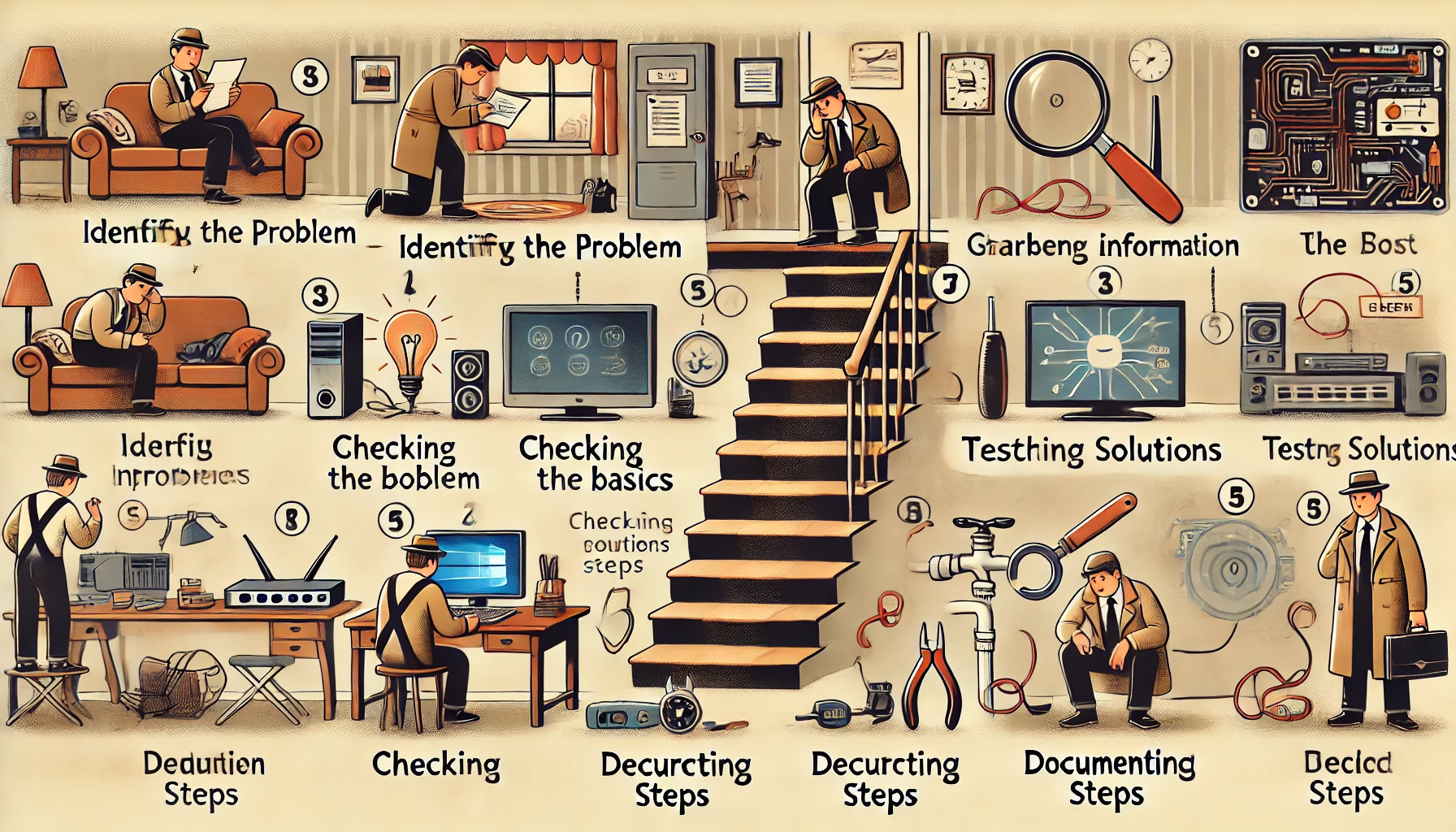
Everyone encounters problems, whether it’s a stubborn computer, a faulty appliance, or even a leaky faucet. Troubleshooting is the process of identifying and resolving these issues. Let’s dive into some simple steps to troubleshoot effectively and get things back on track.
What Is Troubleshooting?
Troubleshooting is like being a detective. It involves identifying the root cause of a problem and then finding a solution. By following a structured approach, you can save time, reduce stress, and avoid unnecessary repairs or replacements.
Step 1: Identify the Problem
First things first, you need to pinpoint the issue. Ask yourself:
- What’s not working?
- When did the problem start?
- Have any changes been made recently?
For example, if your computer isn’t turning on, think about the last time it worked and any changes you made since then.
Step 2: Gather Information
Next, gather all the relevant information about the problem. This could include:
- Error messages or codes
- Recent updates or changes
- Unusual sounds or behaviors
The more details you have, the easier it will be to diagnose the problem.
Step 3: Check the Basics
Often, the solution is simpler than you think. Start by checking the basics:
- Is the device plugged in?
- Are the connections secure?
- Have you restarted the device?
For example, if your Wi-Fi isn’t working, ensure your router is plugged in and all cables are connected properly.
Step 4: Research the Issue
Use online resources to find information about the problem. Websites, forums, and tutorials can be very helpful. Search for:
- The exact issue or error code
- Similar problems faced by others
- Potential solutions
Step 5: Test Solutions
Now, it’s time to test possible solutions. Start with the simplest fix:
- Restart the device
- Update software or drivers
- Reset settings to default
If the first solution doesn’t work, move on to the next one. Be patient and methodical.
Step 6: Document Your Steps
Keep a record of what you’ve tried and the results. This helps in two ways:
- You won’t repeat the same steps.
- You can provide detailed information if you need expert help.
Step 7: Seek Expert Help
If you’ve tried everything and the problem persists, it might be time to call in an expert. Provide them with your documentation to speed up the diagnosis process.
It’s here Exploring the Power of AI in Protecting
Common Troubleshooting Scenarios
Let’s look at a few common troubleshooting scenarios and how to handle them.
Computer Won’t Turn On
- Check the power cable and outlet.
- Ensure the monitor is on and connected.
- Listen for beeps or look for indicator lights.
- Try a different power source.
Slow Internet
- Restart your router and modem.
- Check for background apps using bandwidth.
- Move closer to the router or use a wired connection.
- Contact your ISP for outages or issues.
Leaky Faucet
- Turn off the water supply.
- Identify the type of faucet (compression, ball, cartridge, or ceramic disk).
- Replace worn-out washers or O-rings.
- Reassemble the faucet and turn on the water supply.
Tips for Effective Troubleshooting
- Stay Calm: Frustration can cloud your judgment.
- Take Breaks: If you’re stuck, take a break and come back with fresh eyes.
- Use Reliable Sources: Stick to trusted websites and forums.
- Keep Tools Handy: Basic tools like a screwdriver set, multimeter, and pliers can be very useful.
FAQs
Q: What if I can’t find any information about my problem?
A: Try broadening your search terms or look for related issues. Sometimes a similar problem can lead you to a solution.
Q: How do I know when to give up and call a professional?
A: If the problem is beyond your understanding or if you risk causing further damage, it’s best to call a professional.
Q: Can I prevent problems from occurring in the first place?
A: Regular maintenance and updates can prevent many issues. Keep your devices clean, updated, and secure.
Wrapping Up
Troubleshooting might seem daunting at first, but with a structured approach, you can tackle most problems effectively. Remember to stay calm, be patient, and use the resources at your disposal. Whether it’s a tech issue, a household repair, or something else, you’ve got the tools to find a solution.

